TGL, explained: 8 questions you probably still have about golf’s new simulator league – Australian Golf Digest

- by Admin
- September 18, 2024

Part simulator, part real golf. On ESPN in primetime. A collapsed stadium. Rory and Keegan leading the Boston team. Hundreds of millions of dollars in investment from A-listers like Stephen Curry, Serena Williams and Justin Timberlake.
You may have heard brief rumblings and team announcements, but chances are your understanding of TGL – the primetime golf league scheduled to debut on January 7, 2025 – is a little a fuzzy.
The nascent golf league is the creation of TMRW Sports, the venture led by Tiger Woods, Rory McIlroy and sports executive Mike McCarley, in partnership with the PGA Tour in what is widely understood as a counter to the Saudi-backed LIV Golf’s team-golf-in-a-fun-atmosphere appeal.
The stakes are high. If it works, TGL is positioned to capitalise on golf’s growing popularity with casual sports fans and usurp LIV’s claim to captivating team golf. If it fails, millions in investment will be wasted, and perhaps worse, professional golf’s identity crisis in the wake of its schism may further alienate fans who simply want the old status quo of the best players competing over 72 holes on a real course on a consistent basis.
Now less than four months from the start of the new league, we’re getting new details on the format, tech-infused stadium and the bold digital-first hole designs created by world-class architects. You’ve got lots of questions, we’ve got some answers. Here’s what we know.
Wait a minute, wasn’t this league supposed to start this year?
Yep, TGL was originally slated for a January 2024 launch until last November, when the stadium’s roof collapsed. In retrospect, it was fortuitous timing, as the extra year allowed organisers the time to redesign a new, sturdier stadium in Palm Beach Gardens, Florida, and further refine the league’s launch.
OK, so when is it, who’s playing and for how much money?
The first match will be played on Tuesday, January 7, 2025, and will be aired live in primetime on ESPN and ESPN+. The second match will be played a week later on January 14, followed by the third match on Tuesday, January 21, both of which will be aired on ESPN. The full schedule for the rest of the season will be announced soon.
The league consists of six teams of four PGA Tour players. The players combine for more than 200 PGA Tour wins and more than 30 major championship victories. Prior to the original planned launch earlier this year, McCarley (the league’s co-founder) said the total purse would be $US21 million, with $US9 million going to the season’s winning team.
Atlanta Drive Golf Club: Lucas Glover, Patrick Cantlay, Justin Thomas, Billy Horschel
Boston Common Golf: Keegan Bradley, Rory McIlroy, Hideki Matsuyama, Adam Scott
Jupiter Links Golf Club: Tom Kim, Tiger Woods, Max Homa, Kevin Kisner
Los Angeles Golf Club: Sahith Theegala, Tommy Fleetwood, Collin Morikawa, Justin Rose
New York Golf Club: Matt Fitzpatrick, Rickie Fowler, Xander Schauffele, Cameron Young
The Bay Golf Club: Min Woo Lee, Wyndham Clark, Ludvig Aberg, Shane Lowry
What about all of those big-name investors?
Like other sports leagues, TGL teams have private ownership, including from some of the most prominent names in major league sports. Similar to LIV Golf’s team franchising model, TGL teams will have stakes in the league’s overall success.
Atlanta Drive Golf Club: Prominent investors include Arthur M. Blank of AMB Sports and Entertainment, which has ownership in the Atlanta Falcons and Atlanta United.
Boston Common Golf: Investors include John Henry, Tom Werner, Mike Gordon, and Fenway Sports Group, who own the Boston Red Sox, Liverpool FC, Pittsburgh Penguins and RFK Racing.
Jupiter Links Golf Club: Tiger Woods’ TGR Ventures and David Blitzer, who has ownership in the Philadelphia 76ers, New Jersey Devils, Cleveland Guardians, Washington Commanders, Crystal Palace FC, Real Salt Lake, Utah Royals and Joe Gibbs Racing.
Los Angeles Golf Club: Investors include Alexis Ohanian (Angel City FC), Serena Williams, and Venus Williams, as well as smaller stakes held by the Antetokounmpo brothers, Alex Morgan, Servando Carrasco, and Michelle Wie West.
New York Golf Club: Investors include Steven A. Cohen, whose Cohen Private Ventures has ownership stake in the New York Mets.
The Bay Golf Club: Owned by a group led by Avenue Sports Fund with Stephen Curry and Marc Lasry, as well as Andre Iguodala and Klay Thompson.
How does the format work?
Teams will play head-to-head in a 15-hole match. The match will be divided into two sessions. Session 1, on holes 1-9, will be “triples” in which three players on a team play foursomes (alternate shot). Session 2, on holes 10-15, will be “singles” in which players will compete one-on-one.
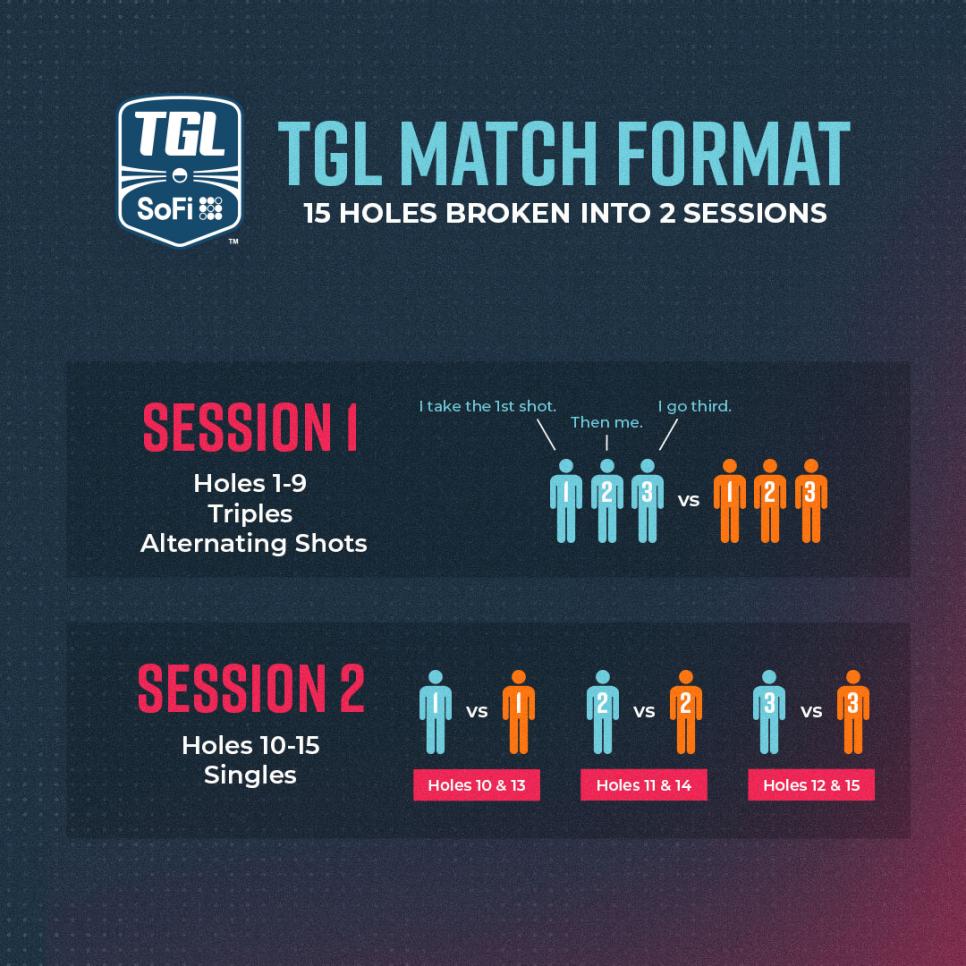
A team will earn one point for winning a hole and if teams tie, no points will be given. There are no carryovers. The team with the most points at the end of 15 holes will be the winner. In the case of a tie, the match will be decided in overtime in a 3-vs-3 closest-to-the-hole competition.
There is a clever twist with the “hammer”, common among weekend money games. In TGL, if a team wants to raise the stakes on a hole, they can “throw” the hammer. If the other team accepts, it raises the stakes of the hole by one point. If the opposing team declines the hammer, they concede the hole. The hammer rotates from team to team, allowing for quick comebacks.
There will also be a 40-second shot clock, limited timeouts available and referees on the field, all making TGL feel fast-paced and closer to a typical stadium sport.
There will be a season-long competition among the six teams. Similar to the NHL points structure, teams will earn two points for a match win, one point for a loss in overtime and no points for a loss in regulation. The top four teams in the season standings will advance to the postseason, which will include single-elimination semi-finals and a best-of-three championship.
I’ve heard there’s a lot of tech involved. Is this simulator golf or real golf?
Yes, yes and yes. TGL is a sort of tech-infused hybrid of simulator and real-world golf. The matches will be played in the 23,000 square-metre SoFi Center, which will seat 1,500 fans and house a huge simulator screen that is 16 metres (53 feet) tall and 20 metres (64 feet) wide – nearly 24 times larger than a standard simulator.
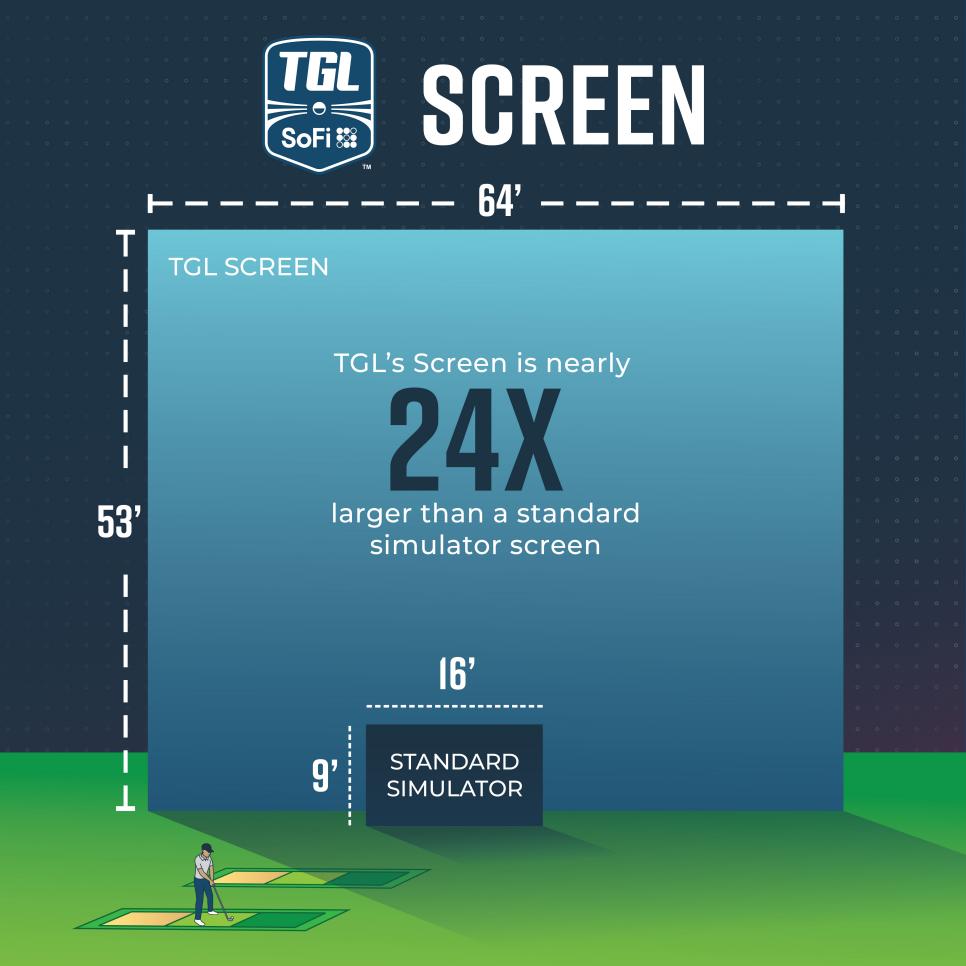
The entire field of play is 89 metres (97 yards) long, 46 metres (50 yards) wide and includes two real-grass tees and a Greenzone the size of four basketball courts.
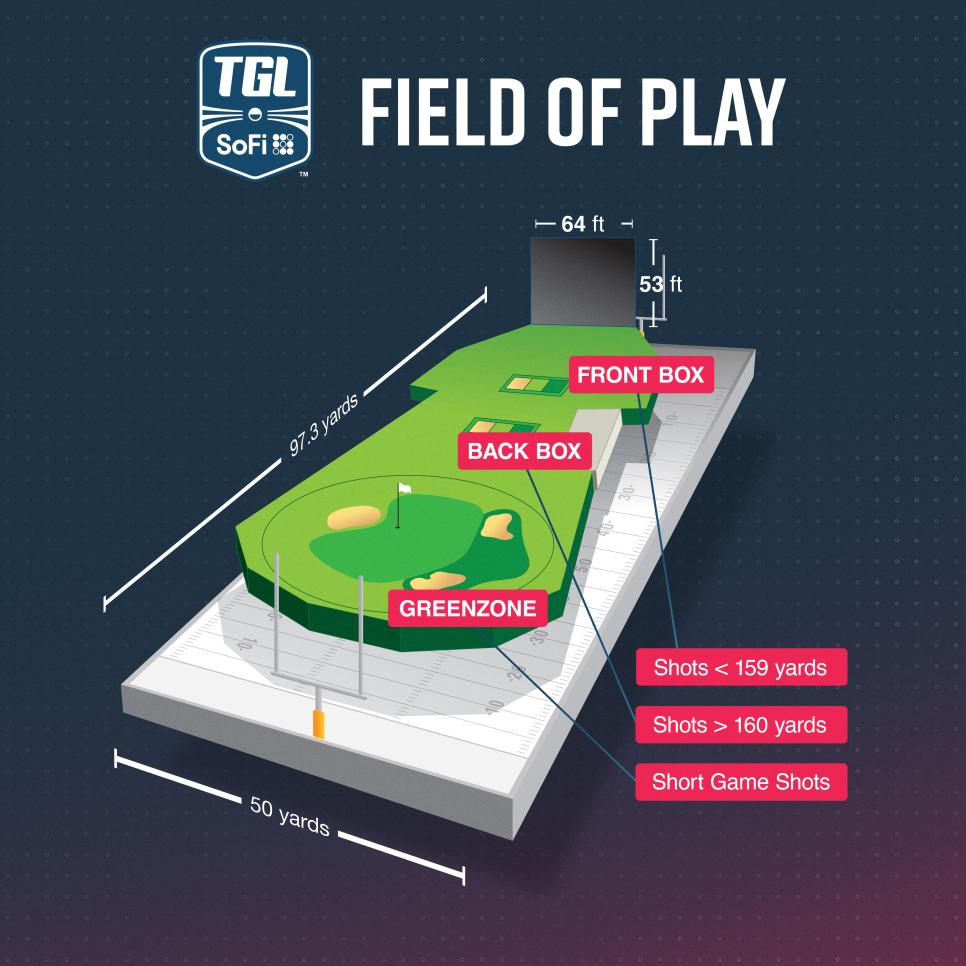
To start a hole, players will hit into the screen from the tee 32 metres away. Teams will continue to hit into the screen until their ball finishes inside the boundary of the Greenzone, after which players will turn around and being playing on the real grass putting surface and green surrounds. The tees include fairway-cut grass, rough and real sand for bunker shots. Around the green players will be able to hit real chips and pitches as well as bunker shots from three bunkers.
So is every hole going to have the same green?
No, and this is where TGL hopes to really distances itself from any other simulator-only game. The golf simulator company Full Swing created a green with 600 actuators which can change undulations in just five seconds, allowing the surface to play quite different from hole to hole. What’s more, the entire green and bunker platform rotates 360 degrees, allowing for approaches to come into the green at different angles on different holes. As a result, each hole will be unique just as it would be in real golf.
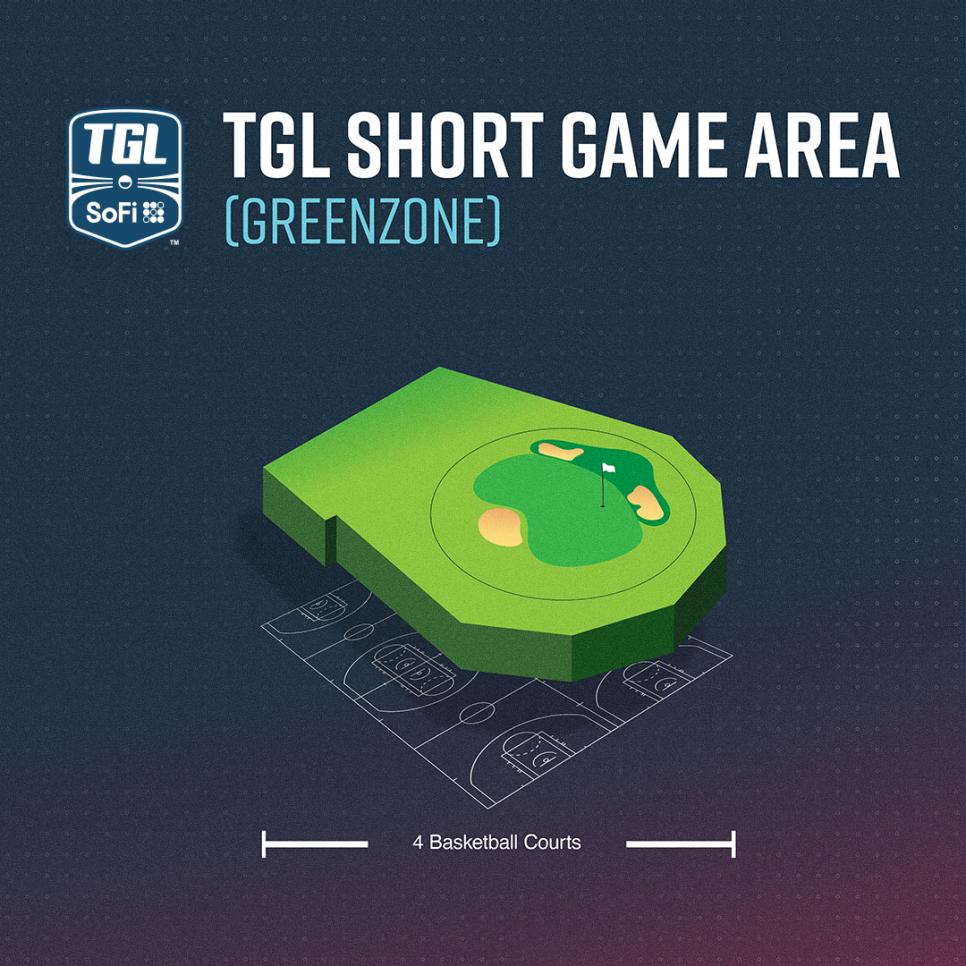 What about those holes, are they going to be playing existing holes or new ones?
What about those holes, are they going to be playing existing holes or new ones?
TGL will consist of a collection of about 30 original holes designed specifically for the league by three top architects – Tiger Woods’ long-time design partner Beau Welling, the Nicklaus Design firm and one of Latin America’s top architects Augustín Pizá.
Pizá has worked on more than 70 course projects across three continents – many of which in Latin America – and has collaborated with Jack Nicklaus, Tom Fazio, Robert von Hagge, Gary Player and others. Being able to design holes with no environmental or monetary restraints was liberating, says Pizá, but it also created new challenges.
“It is a blank canvas. We can do whatever we want,” says Pizá, who earned his master’s degree in golf course architecture from the University of Edinburgh. “Now that is also the challenge because when you have this liberty, you have to design something exciting, something different, something challenging, something beautiful, but also respecting the integrity of the game.”
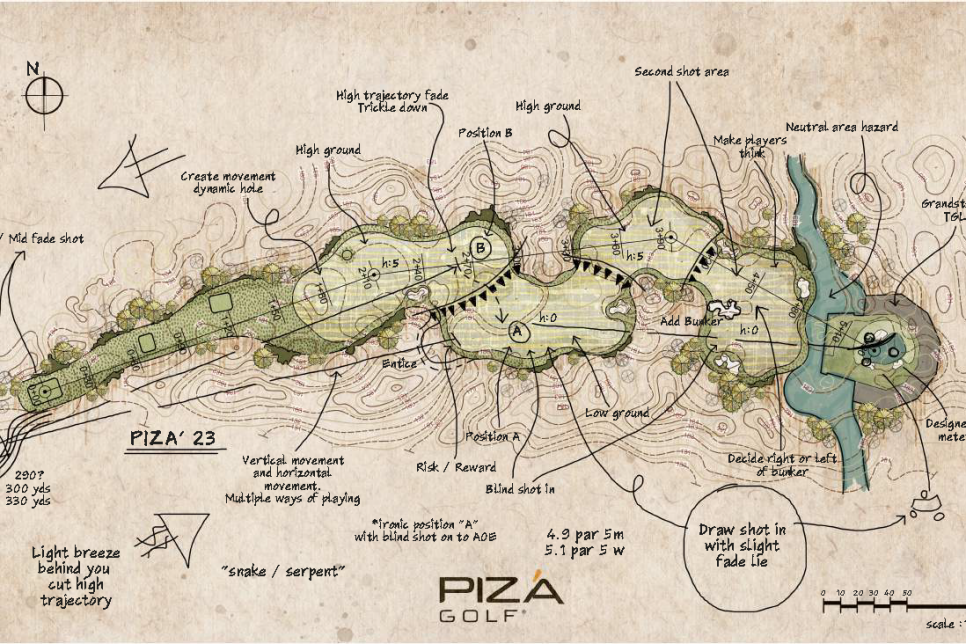
After agreeing to create a batch of holes for TGL, Pizá first started with pencil and paper, as he would for any green-grass course. Next, instead of worrying about where irrigation would go and what the terrain dictates, Pizá had to create the terrain himself. Each TGL plays in a unique landscape, from oceanside to desert to mountains.
“My thought process was to create something that you could still do in real life, but we can’t really do it because of constraints like budget or environmental or timing,” Pizá says. “But there would be a world that you can do it.”
After creating detailed sketches, Pizá worked closely with digital shapers at Full Swing to bring his vision to simulator reality.
Do we know what any of the holes are going to look like?
Yes, TGL has begun to release the holes that players will compete on, including two from Pizá’s batch. One of these, called “Serpent”, is a 551-metre par 5 that Pizá wants to play between a 4.7 and 4.9 average for the pros, so he made it reachable, but not without risk.
“It’s designed for a high trajectory fade off the tee if you’re taking the regular position,” he says. For players who can carry it about 280 metres, they can catch a speed slot that bisects the fairway.

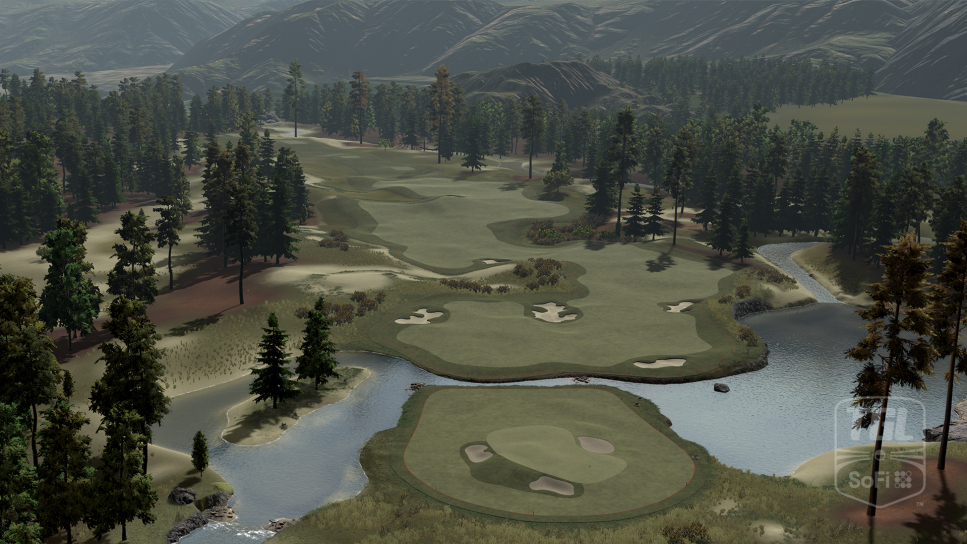

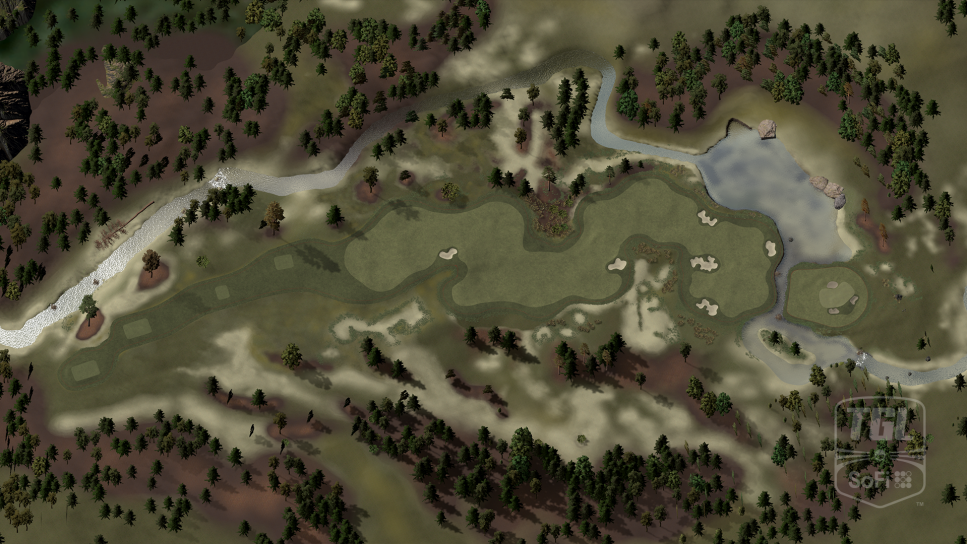
“It’s called Serpent because it’s zigzagging through the terrain,” says Pizá, who is known for his creative and often bold approach to architecture. “From the tee, if you go left, that’s the more conservative shot, but if you hit a very nice high trajectory or mid trajectory left to right shot, you can grab that speed slope and it will take you onto position A, which would be the right side of that zigzag.”
Diagonal lines are present throughout Serpent, which Pizá loves to incorporate in his designs because he says they are visually dynamic and encourage movement in the terrain. For players who play safe up the left side of the hole, they will have the higher terrain and a clearer view of the green but will be unlikely to be able to reach it. Those who play aggressively down the right can reach in two but might have a blind approach.
Another of Pizá’s holes that will force the best players to think strategically on the tee is the short par 4 called “Plank”. Playing between 320 and 350 metres, the hole is reachable for the longest hitters, but a narrowing landing strip requires more accuracy the further you push the ball up.
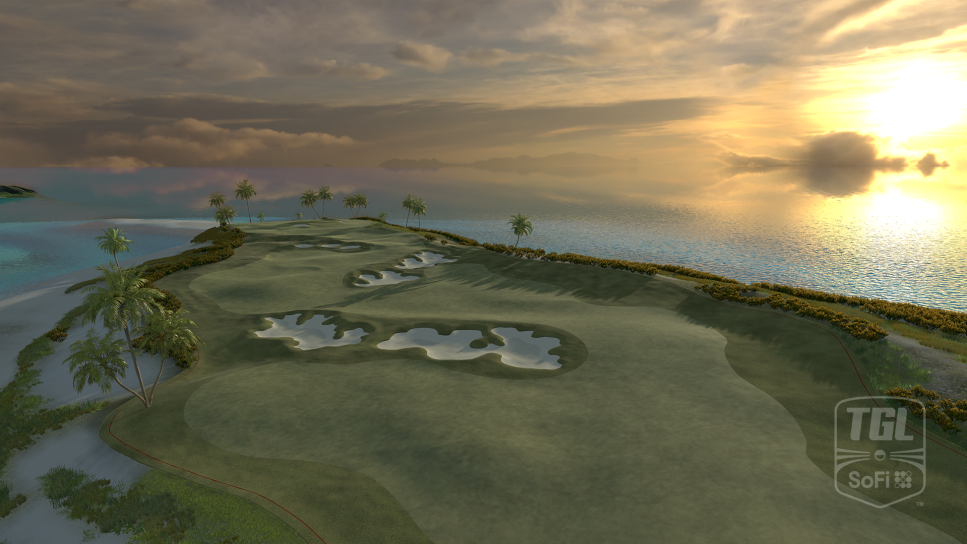

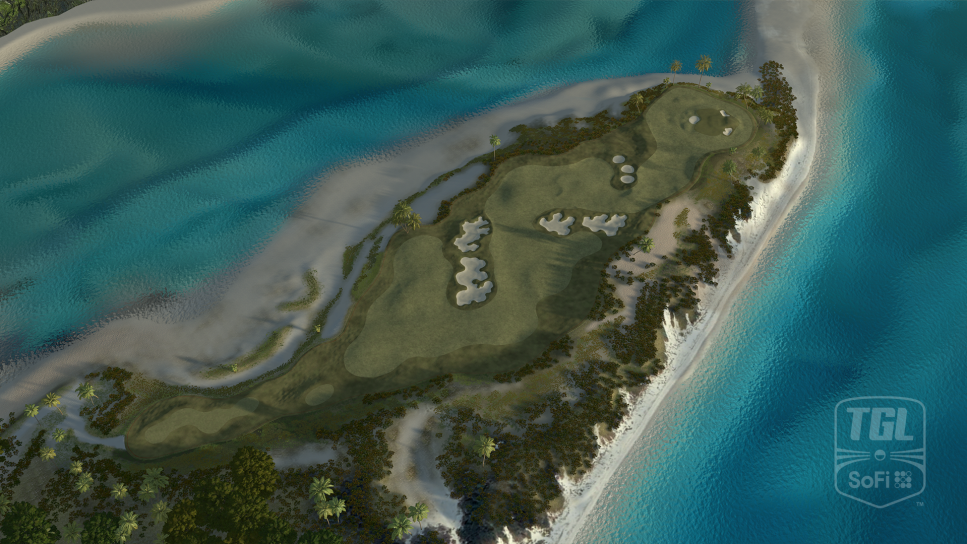
The design, Pizá says, is the recreation of one of his favourite existing holes that he has designed – the 17th at Tampico Country Club in Mexico. The hole plays sharply uphill the entire way with ocean on both sides.
“When you are standing on that tee, this hole plays with your psyche because with that 4 percent uphill lie, you will always see a line of bunkers in your way,” he says.
Three strips of bunkers jut into the landing area, forcing players to get specific with their layup. Should they choose a more aggressive route, the furthest three bunkers are deep pots that make it difficult to reach the green from. It’s these shot options that Pizá strived for and thinks will add an exciting twist that the TGL format encourages.
“In our design philosophy, we love the top player to analyse and then play, and the high handicapper to play and then analyse,” he says.
The Latest News
-
November 15, 2024Nick Kyrgios set to make long-awaited return to tennis as comeback date revealed
-
November 15, 2024List wins elusive DP World Tour card, Barron loses his
-
November 15, 2024India great warns ‘the king is back in his territory’ as struggling Virat Kohli returns for fifth tour
-
November 15, 2024‘Adaptable’ Murphy spins out WA to put Vics in control | cricket.com.au
-
November 15, 2024Nick Kyrgios: Australian tennis star confirms return to ATP Tour at Brisbane International in December





